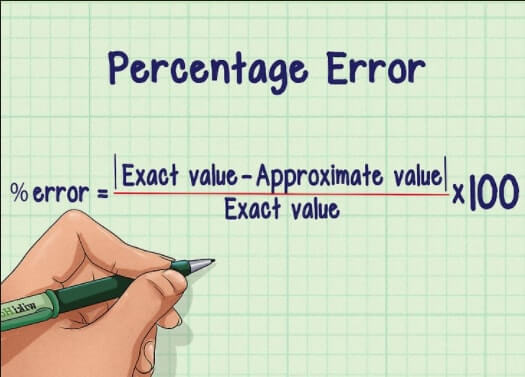Percent Error Calculator - Calculatorall.com
Our percent error calculator can be used for calculating any differences in actual and the observed results. You just have to enter the observed and true values and the rest is taken care of automatically by the calculator.
What Is Percentage Error?
Basically, it's the measurement of any discrepancy between true and the observed value. When some data is being measured, be it a material's density, some falling object's standard acceleration because of gravity, or something other than that, there is some variation from true value and it is observed often. The reasons behind the error can vary but usually it is something caused by human error. However, the limitations of the devices used for measurement can also be the cause behind errors in measurement. No matter what, in these cases it is important that percentage error is calculated. This calculation usually involves absolute error that is the difference of true and the observed values. Once you have the value of absolute error, it is divided by true value and as a result you get relative error. The relative error value has to be multiplied by hundred for obtaining percentage error. The equations given below further clear the concept.
The assumption behind these equations is that we know the true values. Usually, true values are not known and in such situations the standard deviation can be the way of representing the errors.

How It Works
Basically, it's the measurement of any discrepancy between true and the observed value. When some data is being measured, be it a material's density, some falling object's standard acceleration because of gravity, or something other than that, there is some variation from true value and it is observed often. The reasons behind the error can vary but usually it is something caused by human error. However, the limitations of the devices used for measurement can also be the cause behind errors in measurement. No matter what, in these cases it is important that percentage error is calculated. This calculation usually involves absolute error that is the difference of true and the observed values. Once you have the value of absolute error, it is divided by true value and as a result you get relative error. The relative error value has to be multiplied by hundred for obtaining percentage error. The equations given below further clear the concept.
The assumption behind these equations is that we know the true values. Usually, true values are not known and in such situations the standard deviation can be the way of representing the errors.